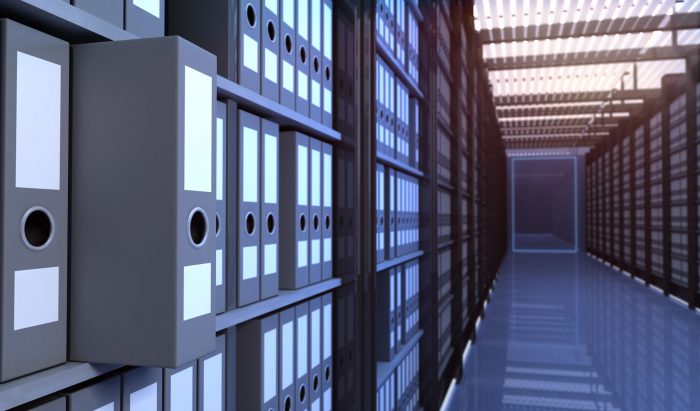The good archive room
Introduction
Whether you already manage an archive, are about to establish one, or perhaps need to move an archive to new premises, it is essential to be aware of the physical framework for the archive. But what really characterizes a good archive room?
Below, we have outlined some general guidelines that you can keep in mind if you wish to assess whether the current facilities are good enough, and which you can also refer to when preparing a specification for new archive rooms.
The points are based on relevant standards, including ISO 11799:2015 – Document storage requirements for archive and library materials and BS 5454:2012 – Guide for the storage and exhibition of archival materials.
A Brief Overview of Specifications
As mentioned in the introduction, a specification can play an important role in ensuring that an archive has good physical frameworks. In a specification, specific requirements for the location, size, structural load-bearing capacity, security levels, climatic conditions, storage and shelving systems, work tools, and much more are identified and set.
Specifications are developed based on considerations of the archive’s overall context and purpose, including legal and regulatory requirements, retention periods (is the material to be stored only for a short time or potentially forever?), legislation, and business needs. If the archive contains several different types of materials (paper, photos, films, objects, data storage media, biological material), part of the specification is to determine the best possible storage conditions for the specific materials and possibly find a compromise. Similarly, risk analyses are often prepared and referred to, whereby significant risks associated with the archive are identified and minimized or eliminated through the specification.
Use cases that describe the archive’s workflows and processes step by step, similar to what is known from IT system specifications, are also useful to prepare, as they can give the recipient of the specification – who may not necessarily have any prior insight into archival work – an understanding of why certain requirements are set.

Guidelines for a Good Archive Room
- Above or at Ground Level
Unfortunately, it’s all too common for an archive to end up placed “where there’s space,” which often means it ends up in the basement. This is a bad idea for many reasons, primarily because of the greater risk of flooding and poor climate conditions (high humidity), which can increase the risk of mold outbreaks.
- Fully Dedicated to the Specific Purpose
A good archive room is used exclusively as an archive room, and therefore it is not used for storing material that is not part of the archive or for storing office furniture, moving boxes, or the like.
- Holds Archive Collections in Their Entirety
If an archive room does not have enough capacity to hold a complete amount of contiguous archive material, the material risks being spread across multiple locations. This can result in a loss of overview and make workflows more complicated and resource-intensive.
- Well-Thought-Out Logistical Conditions
A good archive room is designed to hold as much material as possible. However, it’s also important to remember that the layout should support safe and efficient workflows for the archive staff, including space for handling, placing, and processing archive material, the use of rolling carts and aisles, and more.
- Stable and Suitable Climate
To prevent the degradation of archive materials, it is important that the temperature and humidity of the archive room are regulated and maintained at acceptable levels, and shielding from sunlight is also recommended.
- Secured, Monitored, and Maintained
A good archive room must meet required security levels, provide access restrictions, and log the movement of both internal and external actors within the archive. Monitoring can include things like smoke alarms, water detectors, burglar alarms, climate logging, and pest traps. Ongoing maintenance is also crucial to maintaining efficient operations, including cleaning to counteract pests such as insects.
- Covered by and Integrated into Governance
If an archive room is covered by approved governance, it can be ensured that it is operated according to established procedures and integrated into overall policies. This creates a foundation for continuity, allowing the archive room in its specific form to be maintained in the event of organizational restructuring or staff turnover. Governance, for example in the form of contingency plans, can secure the archive in the event of fire, flood, or other crisis situations.
As mentioned at the beginning, the requirements you set for an archive room depend on the archive’s context, purpose, and specific needs. What might be a good archive room for some types of archives may not be suitable for others. However, keeping the above general guidelines in mind will put you well on your way to achieving a good archive room.
